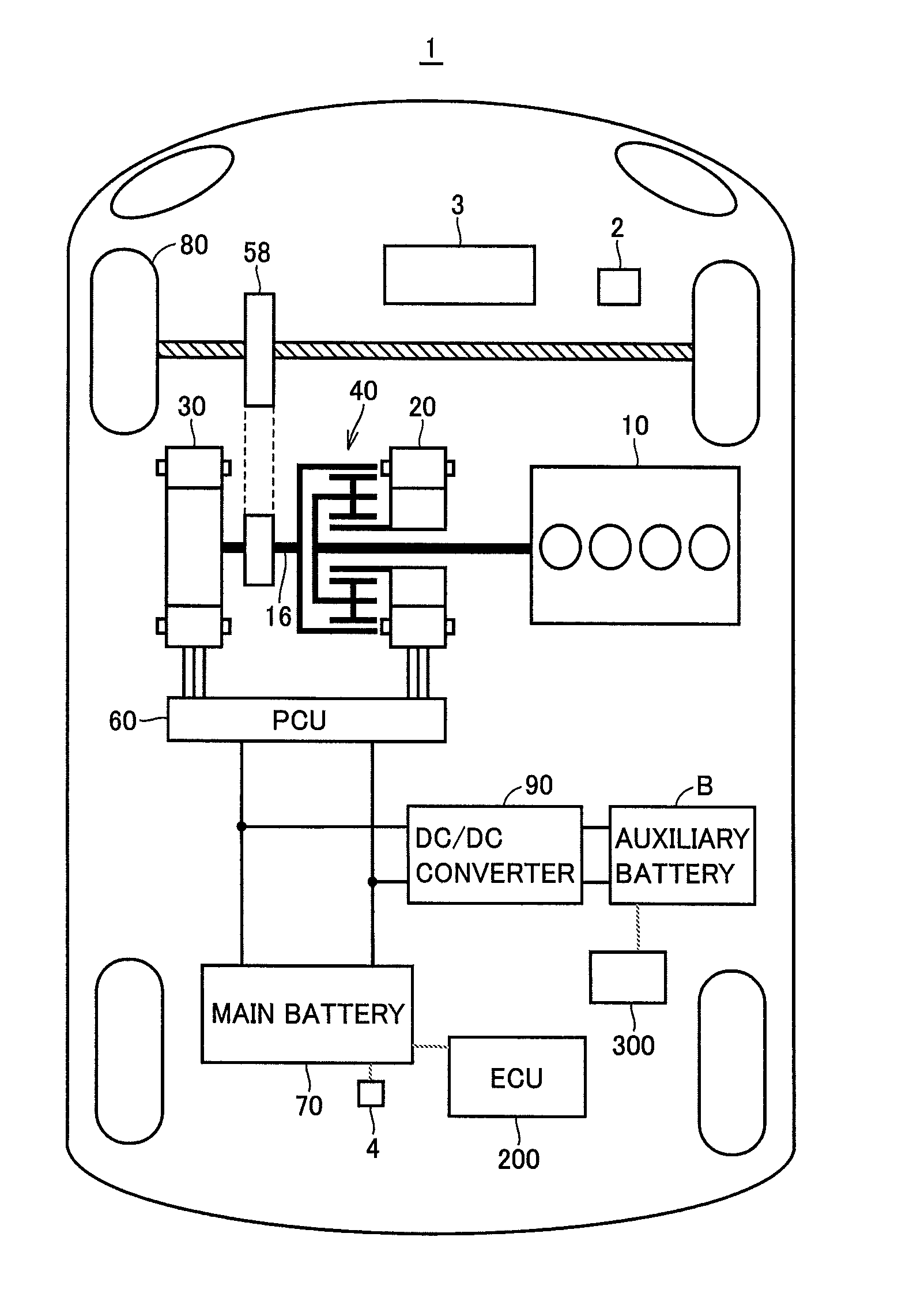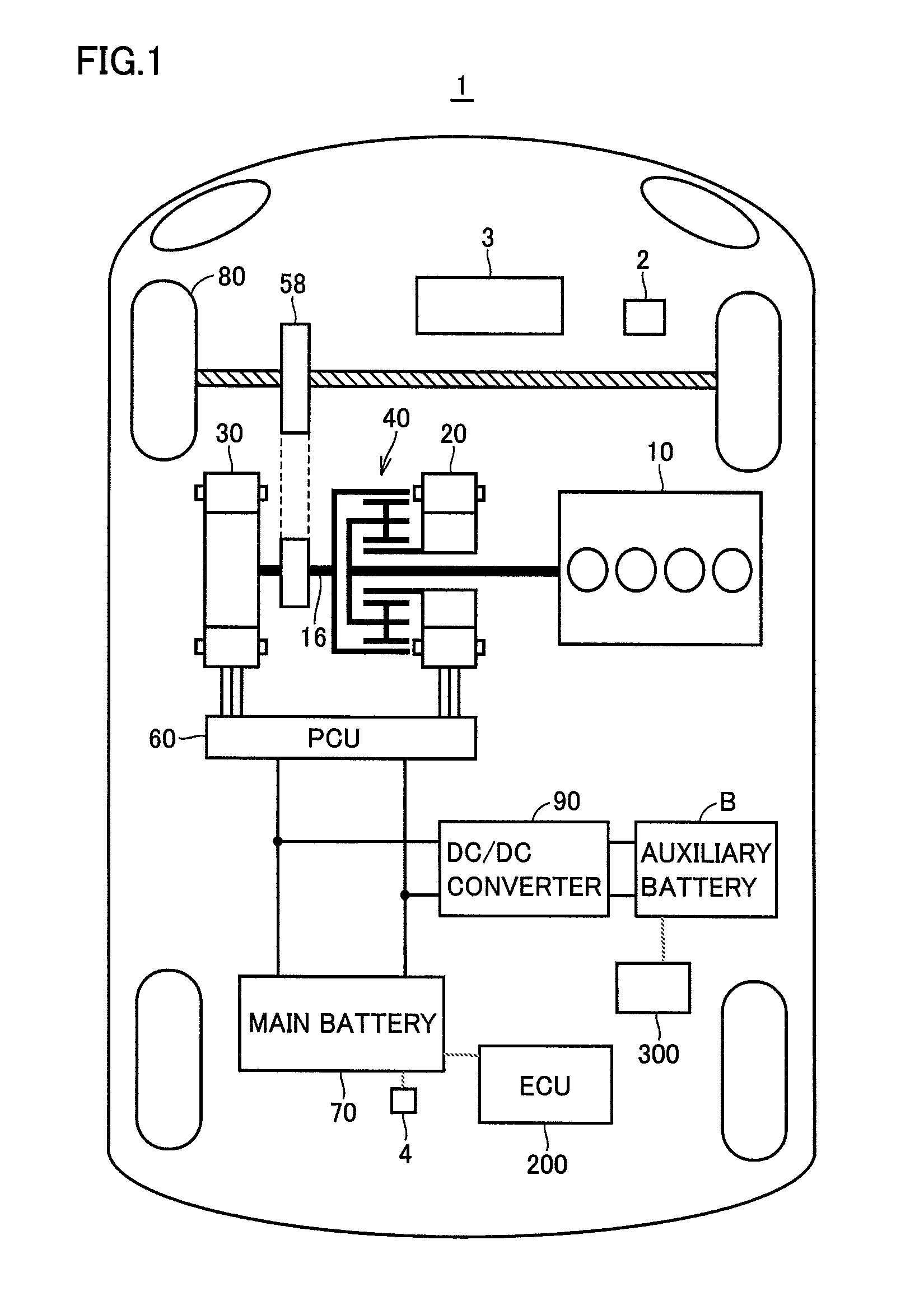Vehicle
a technology for vehicles and vehicles, applied in the field of vehicles, can solve the problems of user inability to extend the permissible unattended period of time, vehicle can only have a limited permissible unattended period, etc., and achieve the effect of poor fuel economy
- Summary
- Abstract
- Description
- Claims
- Application Information
AI Technical Summary
Benefits of technology
Problems solved by technology
Method used
Image
Examples
Embodiment Construction
[0022]The present invention in an embodiment will hereinafter be described with reference to the drawings. In the following description, identical components are identically denoted. Their names and functions are also identical. Accordingly, they will not be described repeatedly in detail.
[0023]Throughout the present specification, the term “electric power” may mean that in a narrow sense (i.e., power) and may also mean that in a broad sense (i.e., work) or electric energy, and the term is construed flexibly depending on how it is used.
[0024]FIG. 1 is a block diagram generally showing a vehicle 1 according to the present embodiment. Vehicle 1 includes an engine 10, a driving shaft 16, a first motor generator (hereinafter referred to as a first MG) 20, a second motor generator (hereinafter referred to as a second MG) 30, a power split device 40, a speed reducer 58, a power control unit (PCU) 60, a battery storing electric power for driving the vehicle (hereinafter also referred to as...
PUM
 Login to View More
Login to View More Abstract
Description
Claims
Application Information
 Login to View More
Login to View More - R&D
- Intellectual Property
- Life Sciences
- Materials
- Tech Scout
- Unparalleled Data Quality
- Higher Quality Content
- 60% Fewer Hallucinations
Browse by: Latest US Patents, China's latest patents, Technical Efficacy Thesaurus, Application Domain, Technology Topic, Popular Technical Reports.
© 2025 PatSnap. All rights reserved.Legal|Privacy policy|Modern Slavery Act Transparency Statement|Sitemap|About US| Contact US: help@patsnap.com



